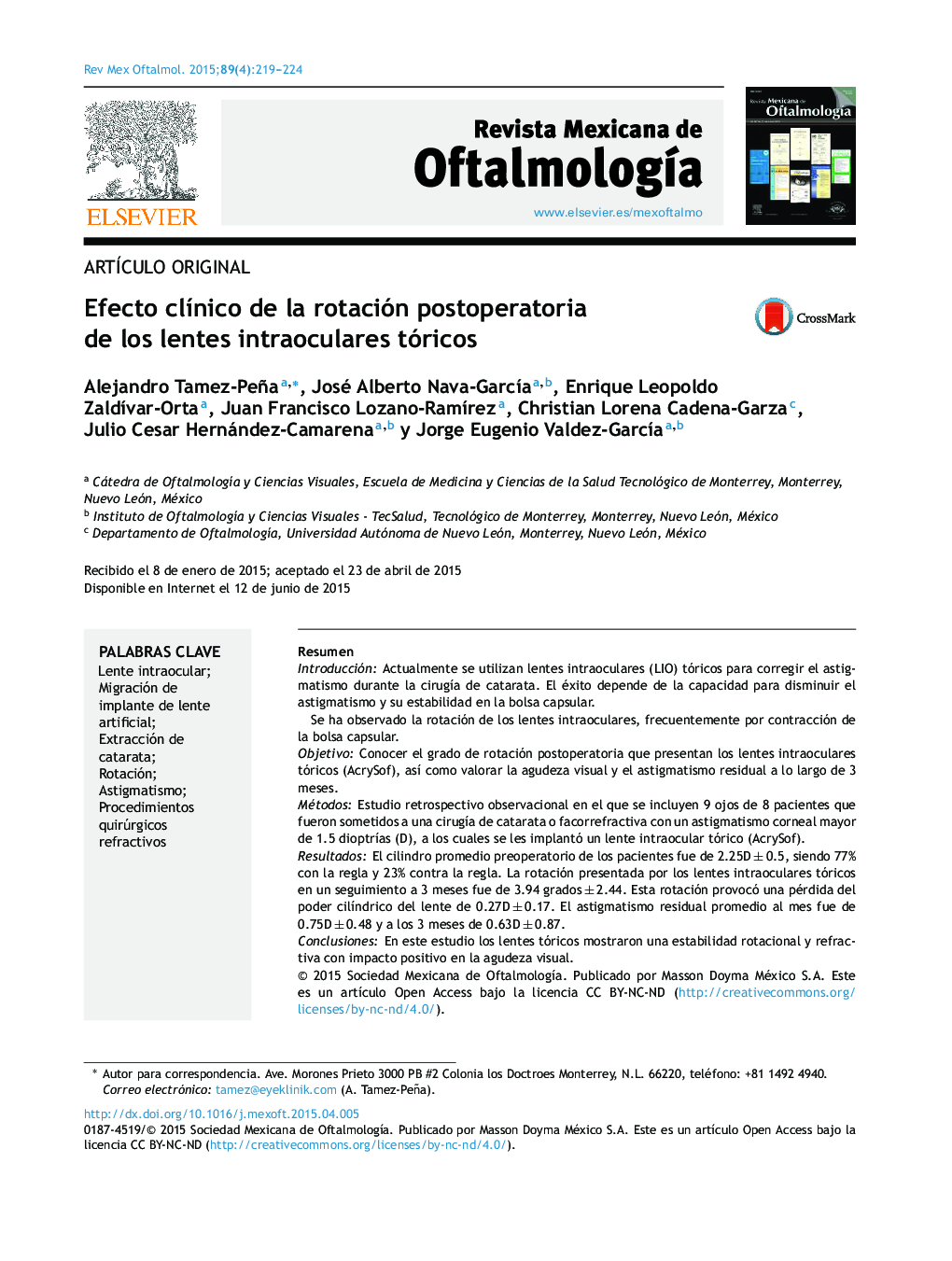| کد مقاله | کد نشریه | سال انتشار | مقاله انگلیسی | نسخه تمام متن |
|---|---|---|---|---|
| 4032349 | 1263047 | 2015 | 6 صفحه PDF | دانلود رایگان |
ResumenIntroducciónActualmente se utilizan lentes intraoculares (LIO) tóricos para corregir el astigmatismo durante la cirugía de catarata. El éxito depende de la capacidad para disminuir el astigmatismo y su estabilidad en la bolsa capsular.Se ha observado la rotación de los lentes intraoculares, frecuentemente por contracción de la bolsa capsular.ObjetivoConocer el grado de rotación postoperatoria que presentan los lentes intraoculares tóricos (AcrySof), así como valorar la agudeza visual y el astigmatismo residual a lo largo de 3 meses.MétodosEstudio retrospectivo observacional en el que se incluyen 9 ojos de 8 pacientes que fueron sometidos a una cirugía de catarata o facorrefractiva con un astigmatismo corneal mayor de 1.5 dioptrías (D), a los cuales se les implantó un lente intraocular tórico (AcrySof).ResultadosEl cilindro promedio preoperatorio de los pacientes fue de 2.25D ± 0.5, siendo 77% con la regla y 23% contra la regla. La rotación presentada por los lentes intraoculares tóricos en un seguimiento a 3 meses fue de 3.94 grados ± 2.44. Esta rotación provocó una pérdida del poder cilíndrico del lente de 0.27D ± 0.17. El astigmatismo residual promedio al mes fue de 0.75D ± 0.48 y a los 3 meses de 0.63D ± 0.87.ConclusionesEn este estudio los lentes tóricos mostraron una estabilidad rotacional y refractiva con impacto positivo en la agudeza visual.
SummaryIntroductionCurrently, toric intraocular lenses (IOL) are being used for the correction of astigmatism in cataract surgery. The success of the IOL depends on the capacity to reduce the astigmatism and the stability of the crystalline capsule. It has been observed that IOLs suffer rotation, frequently because of the capsule shrinking.PurposeTo evaluate the postoperative rotational stability of the toric intraocular lens (IOL) Acrysof and its refractive outcome during the first 3 postoperative months.MethodsA retrospective observational study, including 9 eyes of 8 patients that had a cataract or a phaco-refractive surgery with a corneal astigmatism of at least 1.50 Diopters (D), in which we implanted an Acrysof toric IOL.ResultsThe mean preoperative astigmatism of the patients was 2.25 D ± 0.5, being 77% with the rule and 23% against the rule. The mean IOL rotation from baseline to 3 months postoperatively was 3.94 degrees ± 2.44. This rotation caused a 0.27D ± 0.17 loss of astigmatic IOL power. The mean residual refractive astigmatism was 0.75D ± 0.48 at one month and 0.63D ± 0.87 at three months.ConclusionIn this study the Acrysof toric lens showed rotational stability and an acceptable refractive result.
Journal: Revista Mexicana de Oftalmología - Volume 89, Issue 4, October–December 2015, Pages 219–224
